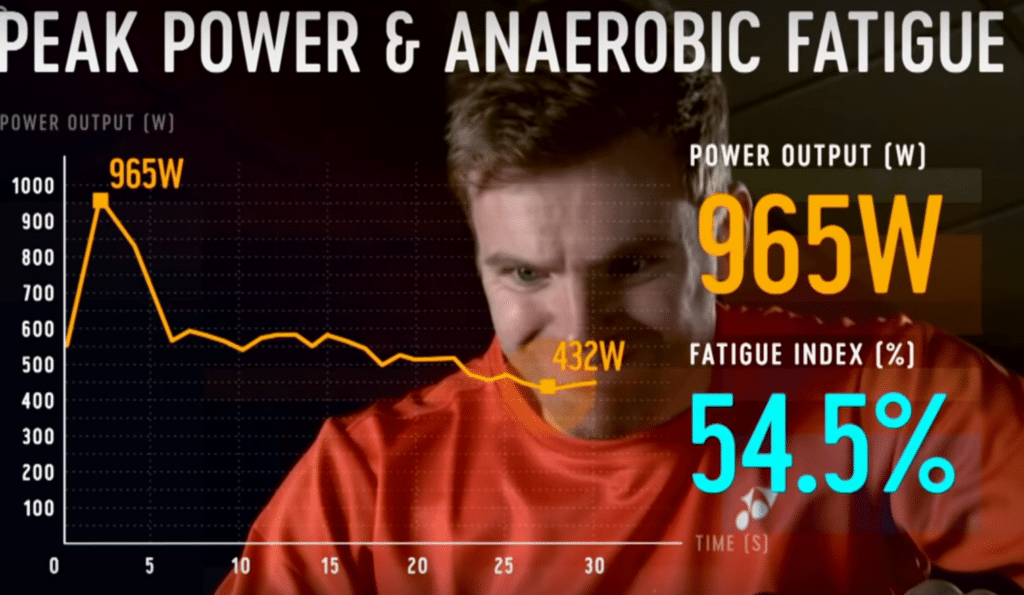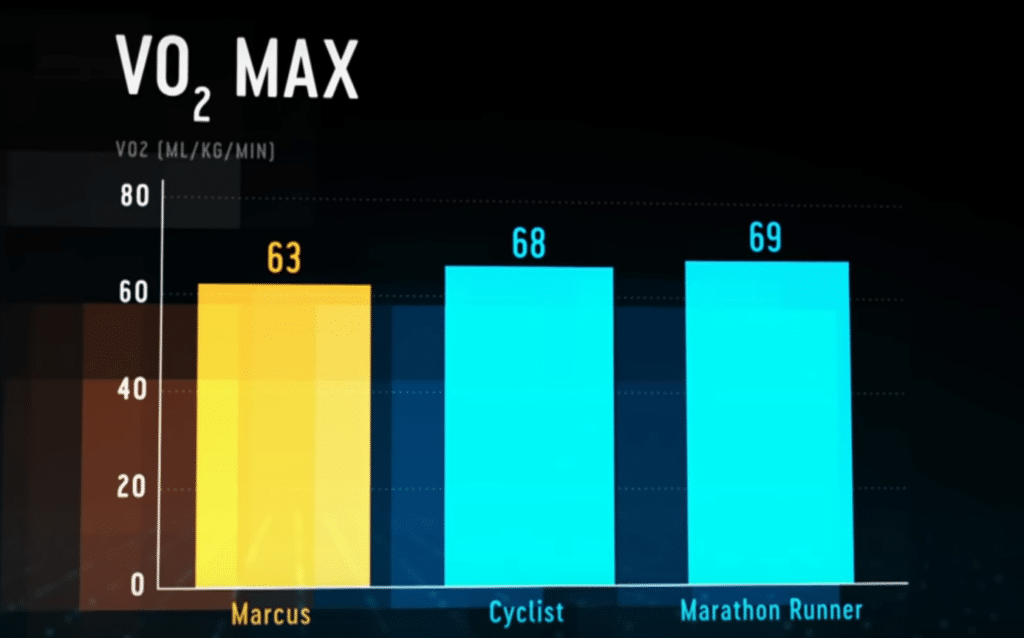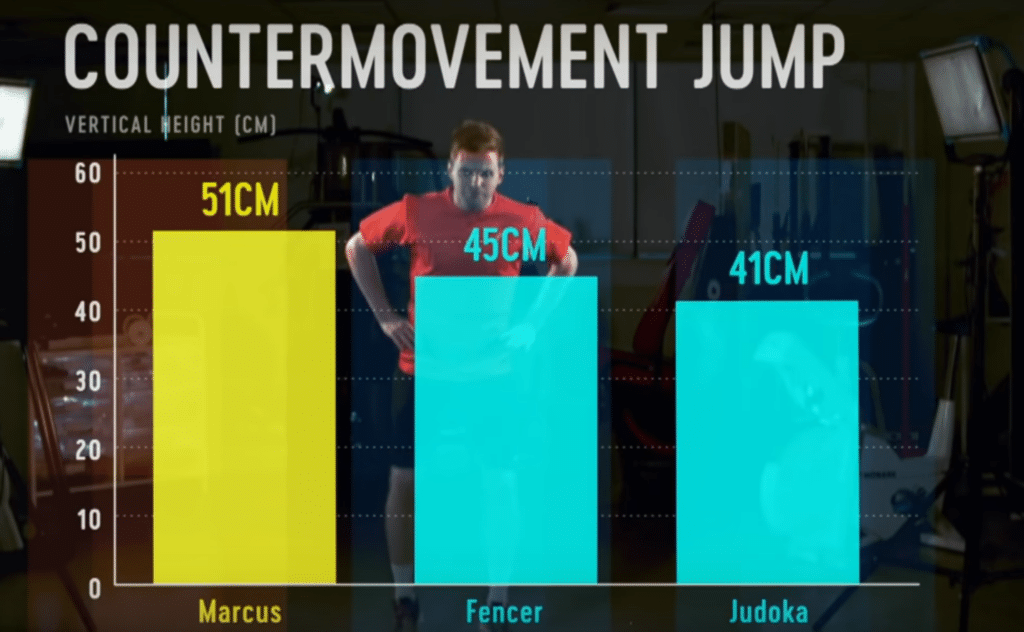It was the halfway mark of the second set. I had lost the first one, 21-18, with a few hard points towards the end where I was simply outplayed. Now, it was 9-11 in my favor. I glanced at my opponent and saw something that completely changed my approach to the rest of the match.
He was struggling visibly. Out of breath and sitting down with his head between his legs staring at the court. I didn’t feel nearly as fatigued and that’s when I knew I had him.
I was going to dig deep into the fitness components of badminton, as deep as I could, and push it to the limit.
As if tracking some kind of wounded animal, I would watch him closely and sniff out any weakness. My plan was simple and basic, but brutal.
I wanted to drag him with me to a dark place of exhaustion. Catch every shuttle I could keep in play – even if I lost the point – only to prolong every rally until his armor cracked, and his technical advantage over me would diminish by the onset of fatigue, bringing him down to a level where I could come out on top.
I won the second set 18-21 and the third 15-21. He was a better technical player than I was, but my fitness level went further that day.
This experience made me realize something about badminton that I hadn’t considered to be possible.
The funny thing is that, at that moment, I instantly knew I couldn’t beat this guy if I allowed him to play his technical game. However, if I dragged him into long rallies by playing “safe” and sticking to solid core shots while waiting for my opportunity, I could become a problem for him – and I did.
It might not have been the prettiest display of badminton, but it was definitely effective.
Badminton fitness components: the ultimate game-changer anyone can achieve – even if you’re starting in your 30s
There’s always someone technically better than you, especially if you’re new to badminton or haven’t played for years.
The funny thing is that even at the highest levels, the difference in fitness seems to put a gap between players.
Just look at this clip where Axelsen takes Naraoka into a long rally and ups the pace toward the end, driving Naraoka to fatigue and strike weak return shots – and this is at the beginning of the second set after they both had time to recover.
Even though these players are pro athletes and both have high fitness levels you still see the big difference in badminton fitness components where Axelsen excels.
The advantage you stand to gain as an amateur player is likely an even bigger bump.
Most amateur players (especially those that are technically very good) don’t tend to focus as much on improving their physical condition because they often outplay anyone with lesser skill by anticipating shots and relying on their technical ability to win.
Weirdly, I’ve seen so many players better than me get tired by the end of a session, and it seems like they would completely dominate if they focused more on getting a higher fitness level.

If you’ve ever played someone who looks like they’d barely run a 100-meter dash but somehow always end up positioning themselves in the right place every time and have great control over where they play the shuttle, you know what I mean.
Fitness is an area of the sport you can get into immediately and get big wins fast.
If you focus on improving various fitness components of badminton, you can bring the fight to more skilled opponents and challenge their technical superiority – just as I experienced in my match.
Of course, if you’re a beginner and play someone several steps ahead of you, it’s unlikely you’ll be able to challenge them (even with incredible fitness,) but you can catch those right above you.
What’s wonderful about badminton is that nearly any physical training translates directly into functional performance.
Badminton is an explosive sport with high-intensity cardio, and you incorporate every muscle and fiber in the body when you move around the court.
The Olympics YouTube channel did an entire video series of different athletes, and badminton might surprise you with its athleticism.
At the time, 30-year-old professional badminton player, Marcus Ellis, showed that badminton athletes are capable of producing similar explosive power as an Olympic sprinter. However, it’s relatively short-lived.

Here’s another look at Marcus Ellis’s body fat percentage compared to other athletes.

These stats are insane!
It says something about the nature of the sport that uses several fitness components simply because that’s the movement required to play. Of course, this is the fitness level of an elite athlete at their peak, but you could expect your body to develop in this direction if you get into the sport (even at an amateur level).
I’ve come to terms with the fact that working out is a lifelong task, to keep up general health and not look 60 when I’m 40. However, I also like to do something with my fitness if I’m spending time on maintaining it, and that’s why I love badminton. It challenges your fitness as much as your skill.
You can feel the effect of any kind of training on the court, whether it’s cardio, strength, or flexibility – AND badminton itself keeps you on your toes for off-court workouts because you’ll experience improvement when you supplement with other training.
Fitness components in badminton boost your game and overall athleticism
Anyone playing badminton stands to gain a lot in three major areas. These are the same areas we need additional training to experience better badminton fitness.
When you’re not at a professional or highly advanced level looking for marginal gains here and there, I’ve found that these three areas provide the biggest immediate improvement to your game.
These areas are:
- Cardio endurance
- Muscle durability
- Flexibility
- Cardio endurance
We could also call this your badminton stamina. As you probably know, this is a sport that takes you through interval workouts with high-intensity bursts of speed that seemingly have no end.
There aren’t really any big breaks in badminton. All you get is a few breaths before every serve and a short break halfway through each set and between sets. So naturally, you need a lot of endurance to avoid gassing out into slow movements that are easy for opponents to anticipate and outplay.
Cardio is probably the highest impact area in badminton fitness. If you’re not used to playing badminton, and you play a few times each week, the first few times will feel overwhelming, but you’ll quickly find yourself at a higher fitness level than you were before.
If we come back to the anatomy of badminton player Marcus Ellis, you can see that even professional players develop endurance on similar levels as other elite endurance athletes.

Again, crazy!
I remember returning to the court after a long hiatus, and I felt I lacked so much general fitness.
There was at least a month where it was an uphill battle to finish the last half of a 2-hour session, and I would drag myself around the court.
Playing regularly (along with my other training), I started to feel comfortable and experienced that I had more energy to focus on my striking technique and footwork.
Within a few months, I even saw the effects from badminton trickle into my runs and started getting faster on my 5k.
General cardio endurance is also the easiest fitness component of badminton to train off the court since all you have to do is add a few days of weekly running to boost performance on the court.
Endurance is a huge factor because you need mental focus to perform the technical aspects while keeping an eye on what your opponent is doing and planning your next move.
That’s a lot to navigate, and all that focus suffers when your endurance gets pushed over the edge.
Think about going on a long run, and as you push through the final stages, gasping for air, your running partner starts telling you to focus on your stride and posture, and whether or not you’re bouncing too much… NO.
No way. Your mind is far too occupied with keeping your legs going, let alone breathing. Never mind perfect running technique.
That’s the same for badminton. If your cardio gives in, there’s no way you can think about your next strike or anticipate your opponent’s moves. You’re just trying to stay alive in the rally.
Here’s a rally that shows how much you sometimes push the limits of endurance in badminton.
- Muscle durability
Not to be mistaken for the same kind of fatigue that comes from a lack of stamina.
You can still have your mental focus and a clear idea of the moves you want to make, except, you can’t perform them if you’ve overexerted your muscles.
You simply don’t get the energy output needed to move fast enough or the power when rotating your hips and shoulders in strikes.
This will happen for top athletes too, but what matters is how long your energy bar lasts before your muscles start to wobble and feel like mush.
Nearly every movement in badminton is a rapid explosion where you burst into maximum energy and return to a ready stance where you can move on the shuttle again.
It’s all jerking reactions like an engine that goes from a calm 1000rpm to 6000rpm in a split second – and then continues in a constant limbo throughout a match.
Coming back to the video on Marcus Ellis, he’s able to jump half a meter into the air from a standing position.

That’s a lot of explosive muscle which is crucial for badminton, especially the lower body muscle durability.
Even though a high jump is impressive, it’s more about the ability to explode a lot of energy in short bursts.
Like this clip between Antonsen and Loh K. Y.
You’ll automatically build some explosive muscle due to the nature of the sport, but so many players lose pace and speed on the court when a match goes into the third set – and it’s even more apparent when you play several practice matches in a row.
When you rev your physical engine the way we do in badminton, it’s bound to take a toll, so you need to give your body a foundation for these wild and intense muscle explosions if you want to avoid getting tired or injured.
One thing I remember after returning to badminton was that I relatively quickly superseded players better than me in this fitness component too by adding a little extra training.
It doesn’t take more than a few months to build your muscle durability to a point where you can easily play two hours of practice before your legs start feeling wobbly.
The crazy thing is that I still experience picking apart higher-level players once they fatigue, and I don’t.
This makes practice on the court even more fun because I can get more out of training by staying at a higher performance level throughout.
It’s also another area most players can gain an advantage in immediately with a little extra training on the side.
If you want more detail about developing this, you can read about strength training in badminton here.
- Flexibility training
Another thing I love about the physicality of badminton is that when you play to the fullest, it activates a full range of motion throughout your body.
However, this is a hugely underrated aspect of badminton fitness that many players across the board tend to overlook.
Flexibility is another fitness component anyone can improve with relatively little effort. It will allow you to reach those far corners on the court when you have to get into a deep lunge on the net or bend backward to hit a clear.
Most players that play a few times a week barely stretch, and flexibility is often an afterthought that you only do whenever something hurts or feels tight – most of the time, we just leave it alone.
The reason it’s hugely underrated besides getting into all those deep and low positions is that it can help you prevent pulling something for a nasty injury that will keep you out of the sport and have you start over with fitness when you return.
It also takes very little upkeep once you have good flexibility, and you’ll walk around feeling a lot more agile and athletic in general.
While it might not be as big of a factor in your badminton fitness as cardio and muscle endurance, the margins of how we’re able to play certain shots or reach tricky shuttles are hugely affected by our range of motion.
I’ve written in more detail about stretching for badminton here and how you can boost your performance in as little as 10 minutes a day.
These three areas are the major fitness components of badminton where you stand to gain a lot and gain it quickly.
Someone with a lot more technical skill can indeed drive their opponent around the court to spend more energy.
However, it doesn’t take nearly as long to develop a higher fitness level compared to developing the perfect technique.
Newer players can improve their game massively by outworking other players who’ve been in the sport for years, surpassing them with an even better fitness level, and putting up more of a fight against more skilled opponents.
You’ll be able to focus and play your shots better because you have a surplus of energy and don’t feel like you’re constantly working at your maximum.
If you haven’t tried badminton before, it might just be the right sport for you if you like sports that challenge nearly every aspect of your body.
For those of you who already play, maybe you need to dig deeper into some of the fitness components if you want to challenge better players and generally just enjoy being able to push further in practice.
Takeaways
- Badminton incorporates various fitness components and requires lean and explosive muscle and high levels of cardio. It’s a sport that develops full-body athleticism and anyone playing needs to deliver massive energy outputs in constant short intensive bursts
- When you match up with a player at a similar technical skill level, fitness is often the winning factor, but even when you play someone a few levels above you, better fitness can help bridge the gap and keep you in the fight and eventually win over the advantage in a match
- The three biggest fitness components in badminton are cardiovascular endurance, muscle durability, and flexibility. Because of that, there’s a broad range of complementary training off the court that can improve your performance when you play
Quick questions about the fitness components of badminton
Badminton is a full-body sport that uses a lot of cardio endurance and short bursts of massive energy outputs from your muscles. The major components that you’ll develop from playing badminton are cardio endurance, explosive and durable muscles, and agile flexible movements around the court.
Cardiovascular endurance is a huge part of badminton fitness especially if you play a hard match that goes beyond two sets to decide a winner. Many professional badminton players can keep up endurance around similar levels as elite endurance athletes like cyclists and marathon runners.
Muscular endurance or “durability” is how long you can keep exerting energy from your muscles before they reach their limit and you can’t produce nearly the same amount of power until you’ve had time to recover. Badminton is known for requiring highly explosive muscles that can keep firing for a long time without fatiguing and depleting muscle energy levels.
All around full body fitness is required to play badminton well. You need cardiovascular endurance, explosive muscles that can excerpt a lot of energy rapidly, muscle endurance and durability so you can keep being explosive in your movements, and finally flexibility because you’re required to move in and out of wide stances, rush into deep lunges and rotate your body in every strike.
Without a good overall fitness level, you risk tiring out faster which makes it much harder to fight your way back into a match where you lost the first set or are behind on points.
A good fitness level is also one of the few factors that allow you to play an opponent with better technique than you and still challenge them on points if you can move faster and keep up the pace for longer and eventually tire them out.